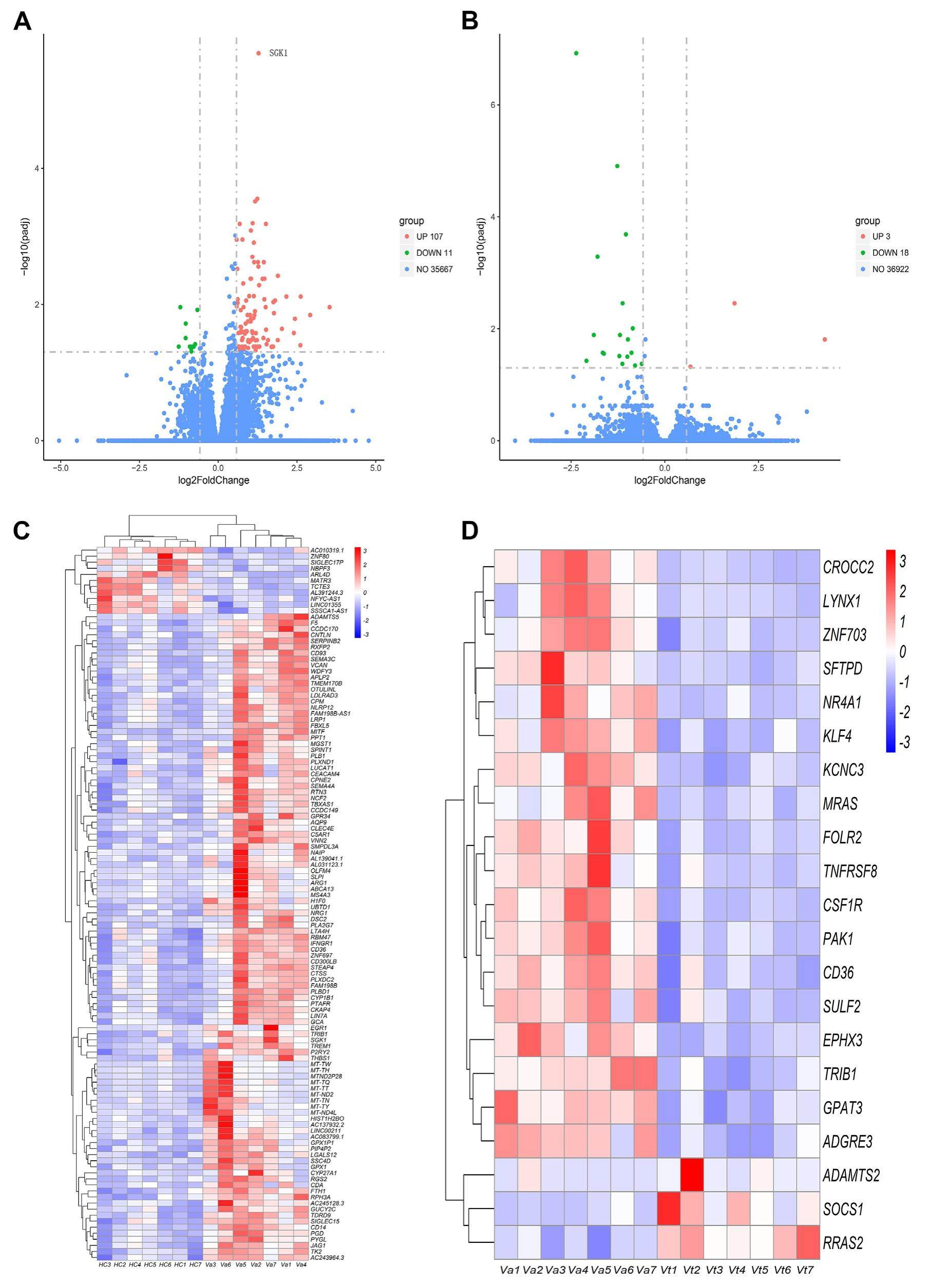
Identification of differently expressed mRNAs by peripheral blood mononuclear cells in Vogt-Koyanagi-Harada disease


Vogt-Koyanagi-Harada disease (VKH) is a rare autoimmune disease characterized by diffuse and bilateral uveitis, alopecia, tinnitus, hearing loss, vitiligo and headache. The transcriptional expression pattern of peripheral blood mononuclear cells (PBMC) in VKH remains largely unknown. In this study, mRNA sequencing was conducted in PBMC from VKH patients with active uveitis before treatment (n= 7), the same patients after prednisone combined with cyclosporine treatment (n = 7) and healthy control subjects strictly matched with gender and age (n = 7). We found 118 differentially expressed genes (DEGs) between VKH patients and healthy control subjects, and 21 DEGs between VKH patients before and after treatment. TRIB1 was selected as a potential biomarker to monitor the development of VKH according to the mRNA sequencing. Gene Ontology (GO) and Kyoto Encyclopedia of Genes and Genomes (KEGG) analysis were performed to predict the possible biological functions and signaling pathways of DEGs. Neutrophil degranulation, peptidase regulator activity, secretory granule membrane, cellular response to peptide, growth factor binding and cell projection membrane were enriched as GO annotations of DEGs. Arachidonic acid metabolism and mitogen-activated protein kinase (MAPK) signaling pathway were potential signaling pathways involved in pathogenesis and drug response of VKH.A protein-protein interaction (PPI) network was constructed by STRING, and colony stimulating factor 1 receptor (CSF1R) was identified as the hubgene of all DEGs by Cytoscape. The cell type presumed to contribute to the aberrant expression of DEGs was analyzed with the use of publicly available single-cell sequencing data of PBMC from a healthy donor and single-cell sequencing dataset of monocytes from VKH patients. Our findings may help to decipher the underlying cellular and molecular pathogenesis of VKH and may lead novel therapeutic applications.
